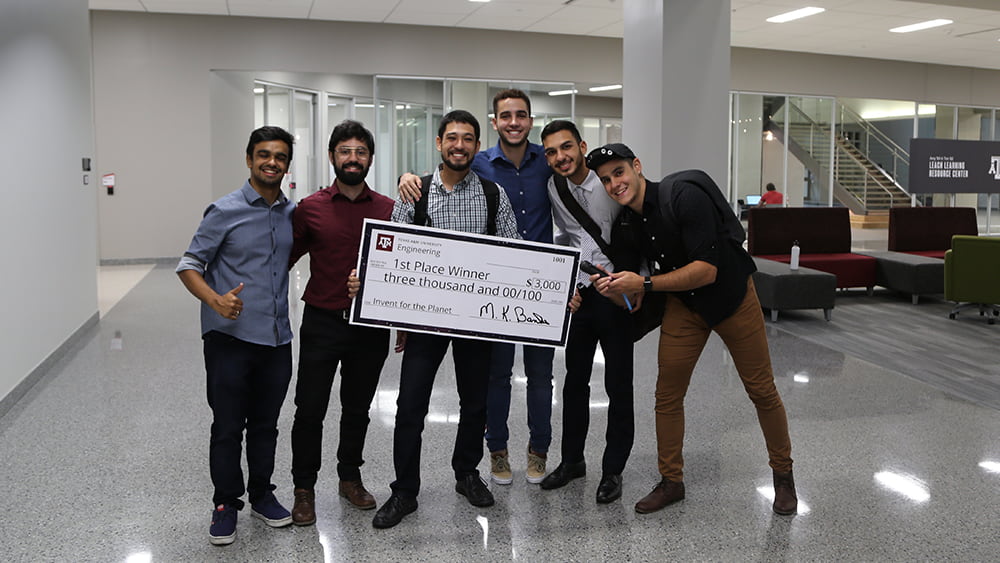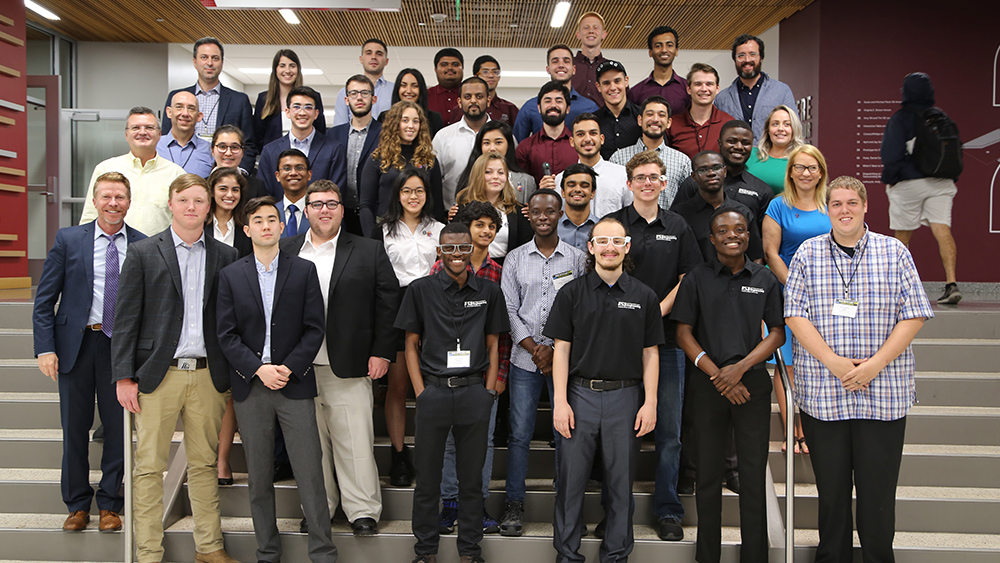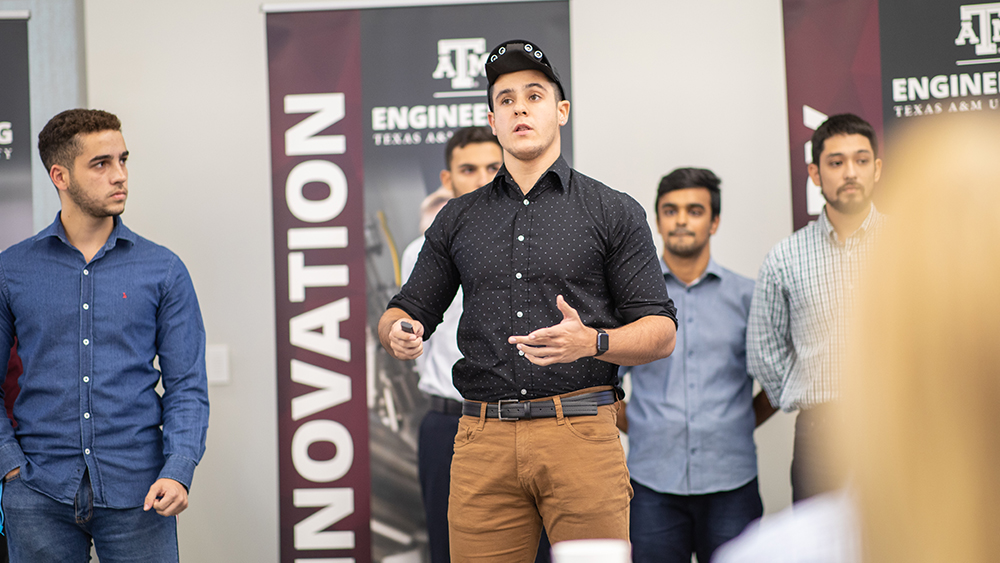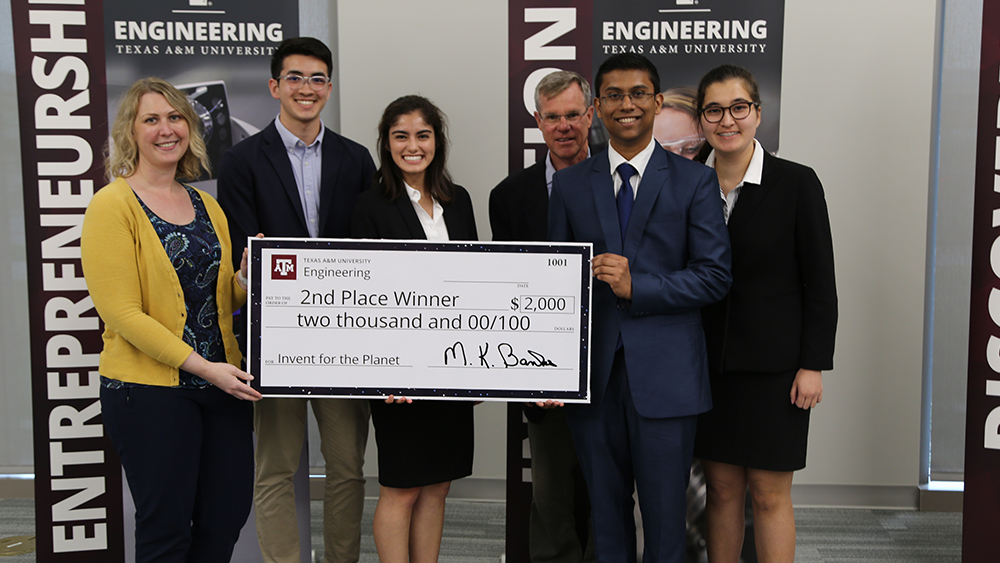
Seven student teams from around the world sat in anxious anticipation last Wednesday afternoon as a group of judges determined their fate in the Invent for the Planet final competition. In the end, it was a team of six students from Brazil who took home first place for their innovative idea that could benefit millions of people with a vision impairment.
These students really embodied what this competition is all about. They saw a need and they worked together to come up with a solution. They have people in their home community who are excited to use the product, and I think they'll be very successful if they move forward with their design.

The Sun Never Sets on Innovation
“When we started Invent for the Planet last year, we wanted to create an opportunity for students around the world to ignore borders and connect all in the name of innovation,” said Rodney Boehm, director of the Engineering Entrepreneurship Program. “This time around, the competition doubled in size, and it was amazing to see the collaboration and creativity that resulted.”
Boehm said he enjoyed watching all of the winning teams mingle and get to know each other in person. Friendships were formed, and the students were inspired to continue collaborating with each other in the future.

How the Competition Works
Invent for the Planet, hosted by the Engineering Entrepreneurship Program at Texas A&M University, began in February with local competitions at 26 universities around the world. More than 600 students participated in the 48-hour challenge to solve some of the world’s biggest problems. First-place winners were selected at each university, and those teams then entered the next round of judging to determine the top five teams. Those teams traveled to Texas A&M for the final competition this past week. They were as follows: Team SuperSocial from Swansea University in Wales, United Kingdom; Team Haildom from Aristotle University of Thessaloniki in Greece; Team SIPS from James Madison University in Virginia; Team Tupa from Universidade Federal do Rio de Janeiro and Centro Federal de Educação Tecnológica Celso Suckow da Fonseca in Brazil; and Team Hail No from Texas A&M.
All other first-, second- and third-place teams were invited to compete in a people’s choice category held on Tuesday. Two teams from Arizona State University — Team WHY and Team DAaEH — and one team from Texas A&M — Team Hydrowhirl — competed in this category. When the results were tallied, there was a tie, allowing Team DAaEH and Team Hydrowhirl to compete the following day during the final competition.
First place: Team Tupa
Team Tupa from Brazil was inspired to design a solution that would benefit students at a school for the visually impaired across the street from their university. In Brazil, there is a shortage of guide dogs and assistive technology for people who are blind, they said. When they entered this competition and saw a need statement about visual impairments, they knew this was a challenge they wanted to tackle.
Their design uses sensors inside a wand or hat, which would send a vibrating sensation to the user when an obstacle is in the way. They brought their working prototype to the competition and allowed people to try it out.
“I’m so excited,” said Giovanni Seiji Conzzolino Enokibara, a master’s student in mechanical engineering. “It was so much work, and we got so far. It’s incredible to be here and to have won this competition.”
The students said their families were watching the livestream of the final pitches, and their phones started ringing as soon as they were announced the winners.
“My mom just called me crying and said she’s so proud,” said Breno Ferreira, an electronic engineering student from Brazil.
Other members of the team were Caio de Lima Barboza, Felipe Macedo Moura dos Santos, Luã Guedes Costa and Victor Hugo Benicio Pint.
“These students really embodied what this competition is all about,” said Boehm. They saw a need and they worked together to come up with a solution. They have people in their home community who are excited to use the product, and I think they’ll be very successful if they move forward with their design.”

Second Place: Team HydroWhirl
The second-place team was Team HydroWhirl from Texas A&M. They designed a water filtration and transportation system that could be used in developing countries where clean water is not available.
“This is the greatest experience I’ve had at A&M,” said Nick Justice, mechanical engineering student. “I recommend it to everyone I talk to.”

Third Place: SuperSocials
Third-place team was Team SuperSocial from Swansea University. They designed an app to reduce loneliness by incentivizing face-to-face interaction between users, offering discounts at participating businesses.
“What drew me to this challenge was precisely because it was as much a social problem as an engineering problem,” said Tofazzal Rashid. “Quite often, as engineering students, we are presented with problems simply as an engineering problem and asked to deliver a simple engineering solution. However, often times this isn’t effective and isn’t sustainable. If you don’t consider socioecological considerations, in any solution, it’s not sustainable because people won’t use your device.”
Invent for the Planet 2020
Invent for the Planet will be held again next year, Feb. 14-16, 2020. Boehm is excited to see the competition continue to grow.
“It’s amazing what can happen when you take away borders, differences and language barriers and give young people around the world one common goal — making a difference,” he said. “I can’t wait to see what happens next year.”